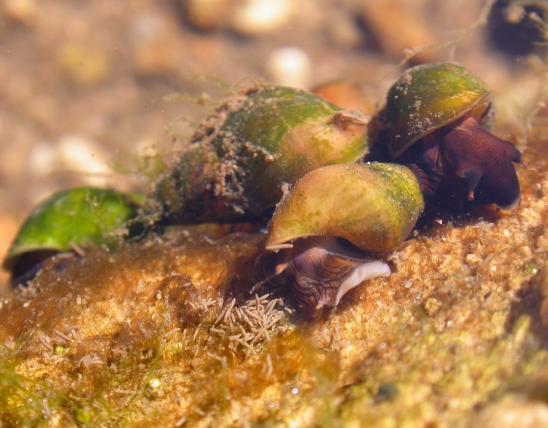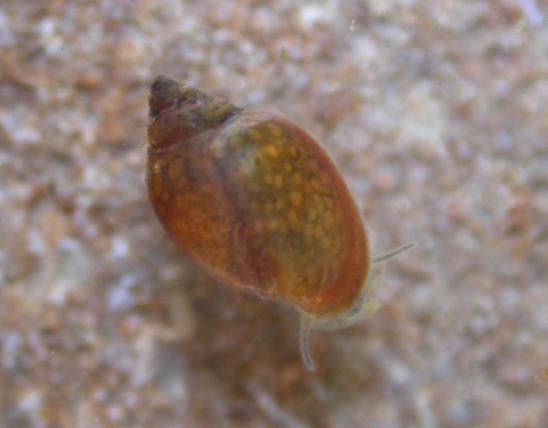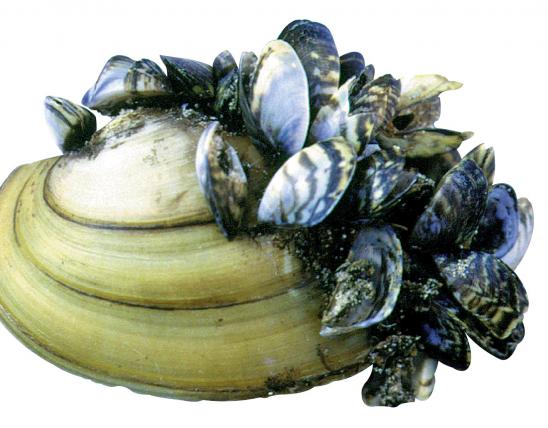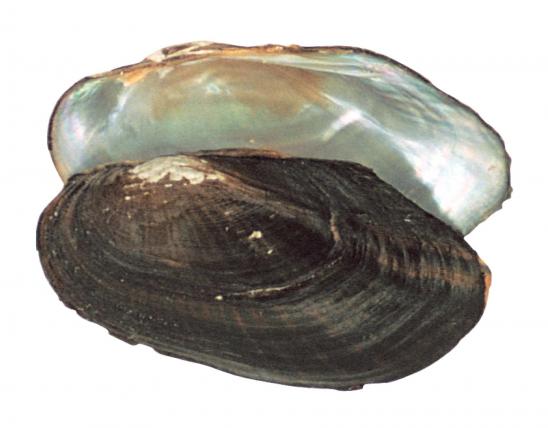
The shell of the Chinese mysterysnail is large, spherical, and smooth. The outer shell is light to dark olive green to brownish. The inner shell is white to pale blue. The operculum, which functions as a door to seal off the shell, is concentrically marked, with uniform color throughout and no banding. The shell can have 6 to 8 whorls. The whorls are strongly rounded, and each suture where the whorls join is very indented. The outer lip is blackish and either round or oval.
Shell length: up to 2½ inches.

Found in at least 11 counties in Missouri.
Habitat and Conservation
The Chinese mysterysnail can live in lakes, ponds, rice fields, irrigation and roadside ditches, and calm portions of streams where there is a soft mud substrate. It typically crawls on the surface of mud and on aquatic vegetation in ponds, lakes, and slow-moving streams.
Never release aquarium species or aquarium water into natural aquatic habitats. Also, learn about and practice clean boating techniques so that you do not accidentally spread invasive mystery snails, zebra mussels, and a host of invasive aquatic plants from one body of water to another. See the link below for tips on clean boating techniques. Finally, learn how to identify invasive animals and plants, so you can report them and help protect our natural ecosystems.
Food
The Chinese mysterysnail feeds on algae (primarily algae that is attached or clinging to plants or other objects that project above the bottom sediment) and dead organic matter on the bottom and attached to vegetation.
Status
Nonnative, invasive species.
Life Cycle
The females do not lay eggs; instead, they give birth to live, crawling young. A female can give birth to 169 young or more in a lifetime, and a single brood may have 102 young. Females can live up to five years, while males only live to about three. This species of snail has an operculum, which is like a door that allows them to close their shells to protect them from predators and to keep them from drying out if they are temporarily out of water.
Human Connections
Mysterysnails have been imported to our country by the aquarium industry as well as for Asian food markets. Some releases were probably from hobbyists, and others may have been deliberate, to create a local food source. This exotic snail species can transmit diseases to humans and clog water intake pipes.
The official common name of this species is spelled closed (without a space) because malacologists (biologists who study molluscs) use the word mysterysnail to signify the genus.
Ecosystem Connections
The Chinese mysterysnail can serve as a vector for the transmission of parasites and diseases to our native aquatic species. Missouri has approximately 60 species of snails native within our borders; this is not one of them. The Chinese mysterysnail competes with our native snails for food and space.





























